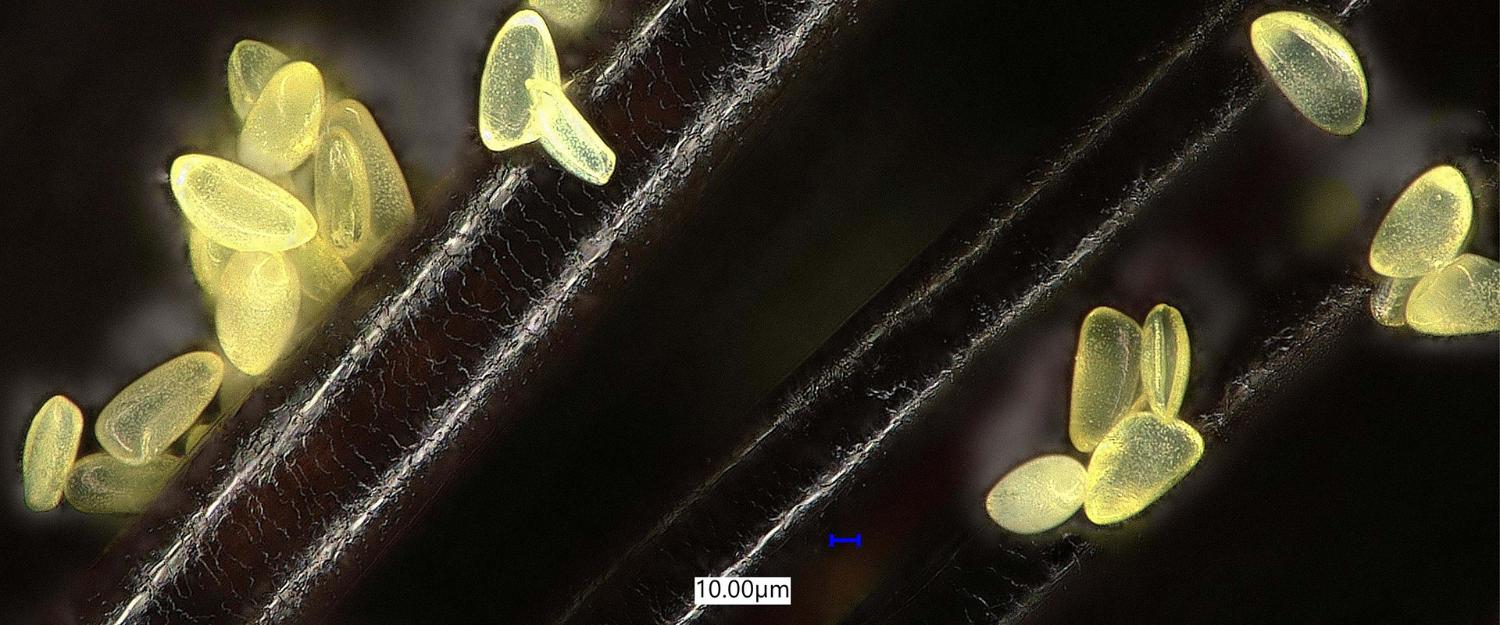Insights | Allergy | Pollen
How to Tackle Pollen Season: Top Tips from a Dyson Microbiologist
An allergy is a condition where the body’s immune system overreacts to a substance that is not typically harmful to your body. Substances that cause allergic reactions are called allergens.
In the US, more than 50 million people experience different types of allergies every year and allergies are the 6th leading cause of chronic illness. Globally, having an allergy to pollen (also commonly known as hay fever) is one of the 10 most common allergies.

“If your flare-ups of constant sneezing, a runny nose, watery eyes, and an itchy throat can be tied to certain seasons of the year, you potentially have a pollen allergy or sensitivity. It is a common misconception that pollen season falls in spring. However, depending on your location and climate, different plants thrive and pollinate during different seasons and for varying durations. Hence, pollen can still be present all year round.”
- Joanne Kang, Lead Research Scientist at Dyson
While symptoms can be managed medically, understanding your allergy triggers enables you to better anticipate your allergy flare-ups and take precautions when necessary.
1. Anticipate allergy flare-ups
Different types of pollen trigger reactions from different people – some people are allergic to tree pollen which is common in spring; others have a problem with grass pollen that is more of a summertime issue, while others have trouble with weed pollen that is common in the fall. In tropical and more temperate climates where ferns thrive and plants do not need to go dormant in the winter, pollination can occur all year round.
Beyond the seasons, temperature, time of day, humidity, and rain affects pollen counts. Many plants release pollen early in the morning and when the weather is sunny and warm – these conditions are when pollen counts are likely to soar. Avoiding outdoor activity when pollen counts are high goes a long way to reduce a flare-up of allergy symptoms. Staying indoors before, during, and immediately after thunderstorms and keeping your windows close can also reduce your exposure to pollen allergens.
Understanding the type of pollen that triggers your allergy symptoms and when it peaks enables you to anticipate your allergy flare-ups and take preventive measures to minimize allergy symptoms.
2. Look for potential triggers in your home
According to the Dyson Global Dust Study, just 1 in 10 people think that pollen constitutes household dust. With pollen spores being as small and lightweight as they are, and with the continuous air exchange between the indoor and outdoor environment, it is inevitable that outdoor dust particles such as pollen can be found in the home. Pollen particles can stick to one’s hair, clothes, and even pets and brought into the home.

The Dyson Global Dust Study reveals that 1 in 5 people wear their outdoor shoes in and around their homes while 2 in 3 people do not change their clothes upon entering their home. Removing your shoes before entering your home and changing your clothes immediately reduces the likelihood of pollen particles that have stuck to them from spreading around the home.
The study also reveals that about 1 in 2 pet owners allow pets onto their beds. Restricting pets’ access to the bedrooms and grooming your pet regularly with a pet grooming vacuum attachment prevents loose hairs, pollen and other particles that may stick to it from being shed and spread around the home.
3. Stick to a cleaning routine
.jpg?$responsive$)
While most people clean their homes regularly, it is important to vacuum beyond just the floors. Pollen particles are extremely small and lightweight, meaning it can become airborne. Open windows mean airborne pollen can enter the home and stick to surfaces including window ledges and curtains. Soft furnishings, fabric covers, pillows, mattresses, sofas, and carpets amongst others can harbour pollen for months and impact one’s health and well-being even outside peak pollen season.
The best way to reduce pollen allergy symptoms is to minimize your exposure to pollen allergen. Vacuuming different surfaces in the home with a particular focus on upholstery and other neglected spots in the home regularly goes a long way in minimizing your exposure to pollen in the home. However, the act of vacuuming may cause dust particles to become airborne and potentially inhaled. It is recommended to vacuum in the absence of allergy sufferers and to use an air purifier to eliminate airborne pollen and allergens in the home.
Discover Dyson
Press contacts
Canada
Email us at CAN.PR@dyson.com
Social media
Twitter: @askdyson
YouTube: youtube.com/Dyson
Facebook: facebook.com/dyson
Instagram: @dyson, @dysonbeauty
LinkedIn: Dyson
